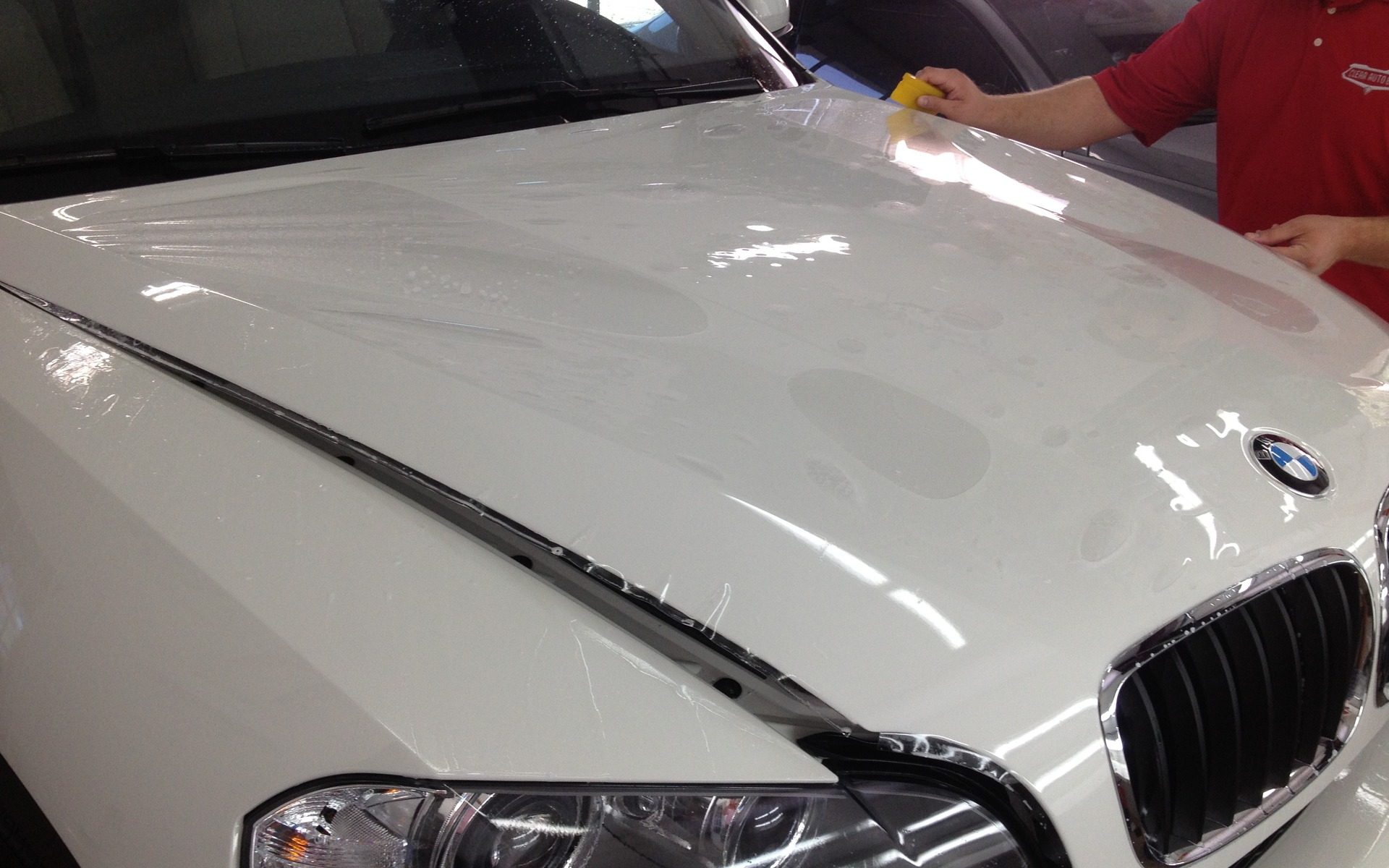Clear Protective Film: No Easy Solution
When selling you a car, many dealerships offer to cover its front end with paint protection film. Why the front end? Because the debris and insects that constantly pummel it at high speed can cause a lot of damage to the clear paint that coats your car.
In other words, the front end is usually the most damaged part of any vehicle. Even if you wax it and protect it with a sealant, the thin coat of paint doesn’t have sufficiently resistant polymers to counter the sand spread on roads in winter.
That’s where the protective film comes in. For a few hundred dollars, they cover the front of your car, sometimes going as far as the lights and mirrors, with a thick protective substance that does a great job resisting rocks and insects.
Unless you purposely look for the line where the adhesive ends and the uncovered paint begins on the hood, you barely see it.
Is it really that effective?
The clear film does a good job, but up to a certain point. It can be pierced by the occasional stone, but for the most part, little rocks don’t frighten it. The real problem with paint protection film mainly concerns people who don’t wash their cars very frequently.
If you don’t protect your paint job with wax at least twice a year, oxidation will make your car lose its glow. But when covered in plastic film, your car’s front end won’t have this problem. With time, you might find that your vehicle’s nose is a different colour than the rest of the body. Food for thought.







